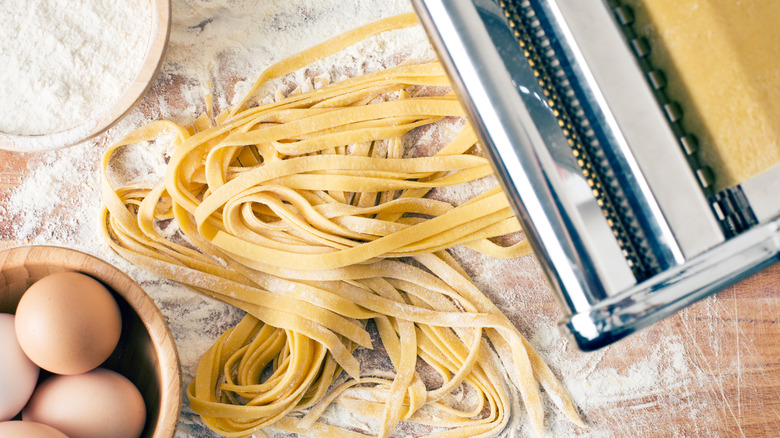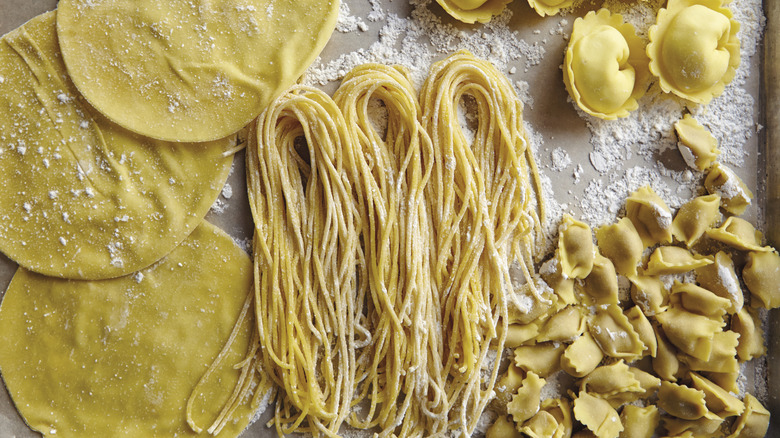The Crucial Ingredient That Makes Or Breaks Gluten-Free Pasta Dough
We may receive a commission on purchases made from links.
If you're eating a gluten-free diet, then you're likely familiar with the trials and tribulations of perusing grocery-store aisles in search of a good gluten-free pasta — one that mimics the fork-tender texture of a perfectly al dente spaghetti or penne. But what if you want to make your own pasta? Skipping out on gluten doesn't mean you should be denied the joy of a delicate fresh pasta, hand-rolled on your own countertop.
That being said, there's one ingredient in particular you need on hand that will make or break — literally break, if you don't have it — your gluten-free pasta dough. That crucial addition? Xanthan gum.
Xanthan gum can be found in many foods, from a bottle of sriracha to a pint of your favorite ice cream. The flavorless substance, which is FDA-approved, consists of an organic bacteria fermented with sugar. While that might not sound particularly yummy, xanthan gum takes on the role of gluten, yielding a pasta dough that's stretchy and elastic, rather than crumbly and dry.
Xantham gum is an essential ingredient for elasticity
Xanthan gum isn't too hard to come by: It's offered at a number of grocery stores and online shopping sites, where it's sold as a fine, white powder. There are various brands, including Food to Live, and Bob's Red Mill. Adding it to pasta dough is easy. Before adding wet ingredients, evenly mix the powdered xanthan gum into your gluten-free flour.
Recipes generally recommend a small quantity of xanthan gum. A little over ½ a teaspoon of gum is often paired with one cup of gluten-free flour. The good news? Some gluten-free flour blends (like Bob's Red Mill, which contains a mix of grains) already have xanthan gum mixed in.
Even with gluten-free pasta, be sure to let your dough rest before you begin rolling it out. You do need to be extra careful not to let it dry out, so wrap any pieces you're not using immediately in saran wrap or something similar. Roll your pasta out and cut your preferred shape. As the flour doesn't contain gluten you don't need to work so hard to activate any ingredients to make it stretchy. Whether you're going for tagliatelle, orecchiette, or ravioli, be sure to give a little thanks to your new favorite secret ingredient.
If you get heavily into the process and decide to invest in pasta-making kit, you can purchase reasonably priced pasta rolling machines and a variety of cutters and rollers online. Then all you need to do is decide which sauce to make accompany your pasta.

